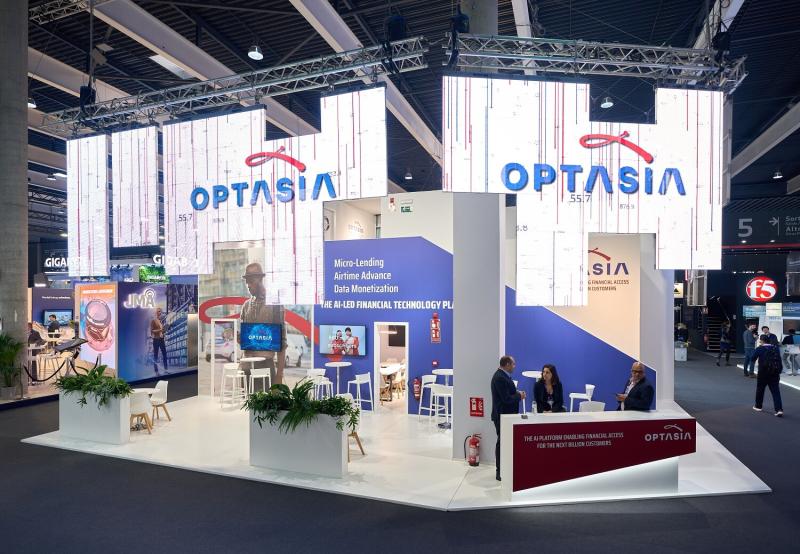Johannesburg’s Big Test as Optasia Brings Frontier Fintech to Market
Optasia’s R6.3 billion IPO on the JSE (J203) could redefine Africa’s fintech story. Backed by AI-based micro-lending and 121 million users, it tests whether profitability—not hype—can still attract global capital amid high yields and currency volatility.

A Dubai fintech that lends to millions across Africa through artificial intelligence is about to test whether global investors still believe in the continent’s digital finance story. Optasia’s planned R6.3 billion (≈ USD 335 million) listing on the Johannesburg Stock Exchange (JSE: J203) could become South Africa’s largest IPO in over a year—or its boldest experiment in turning algorithms into credibility.
Every day, Optasia’s machine-learning platform decides whether 32 million users—from Lagos to Lahore—qualify for airtime credit, micro-loans, or insurance. That invisible infrastructure, embedded in telecom networks like MTN Group (JSE: MTN) and Airtel Africa (LSE: AAF), now supports over 121 million active accounts. It is a quiet engine of financial inclusion—and the centerpiece of a global test for whether emerging-market fintech can remain profitable in a high-rate world.
The company’s IPO blends about R1.3 billion in new capital with R5 billion in secondary sales by early investors. If priced as expected, Optasia could debut at a R22 billion (≈ USD 1.2 billion) market capitalization, joining Africa’s top fintechs. In FY 2024, it reported USD 440 million in revenue and USD 112 million in EBITDA, yielding a 25 percent margin—outpacing Safaricom’s (NSE: SCOM) M-Pesa unit and surpassing most regional digital lenders.
Yet behind those figures lies fragility. About 65 percent of Optasia’s revenue originates in African markets where inflation and currency depreciation can erode returns overnight. Its exposure to the Nigerian naira (USD/NGN ≈ 1,600), Kenyan shilling (USD/KES ≈ 129.4), and Pakistani rupee (USD/PKR ≈ 280) underscores that risk. Regulators across these economies have tightened digital-credit rules since 2024, narrowing the policy space for high-frequency micro-lending.
Investors are watching valuation multiples as closely as mission statements. The float targets an implied 10× EV/EBITDA multiple—above Lesaka Technologies (NASDAQ: LSAK ≈ 8×) and Nigeria’s private-market Interswitch (6–7×) range. That premium reflects confidence in Optasia’s data engine and telecom integrations, but it also sets a performance bar few frontier fintechs have cleared.
The global backdrop complicates that bet. Equity liquidity on the JSE remains thin, with institutional capital still favoring South Africa’s 10-year bond (ZAR2035 ≈ 10.4 %, real yield ≈ 4.8 %), while the Dollar Index (DXY: DX-Y.NYB hovering near 105.7) continues to offer high risk-free returns. Across frontier markets, the MSCI Frontier Markets Africa Index (Bloomberg: MXFM AF) is up just 2 percent YTD, evidence that investors remain defensive. If Optasia’s IPO succeeds, it could signal that markets still reward operational profitability even in a world of expensive capital.
Optasia’s strategy leans heavily on telecom alliances. Nearly 80 percent of its distribution depends on mobile operators for data and credit scoring. That interdependence offers scale but also counter-party exposure—if telco partners tighten terms, margins compress quickly. The firm’s risk-modeling accuracy, default rates, and collection efficiency will determine whether it can sustain double-digit returns beyond the IPO window.
From Johannesburg to New York, analysts are asking whether this listing represents fintech’s second act: less hype, more durability. Unlike early-stage digital lenders that chased users, Optasia brings real earnings and a decade of operational data. Its pitch to investors is not about exponential growth but about consistency—a narrative more aligned with post-2022 capital discipline.
For African markets, the symbolism matters as much as the numbers. If Optasia prices successfully and trades well, it could reopen the continent’s equity-capital pipeline, revive JSE tech appetite, and showcase how AI-driven credit infrastructure—not just consumer apps—can generate steady, dollar-denominated revenue. If it falters, it may confirm that fintech’s credibility premium has eroded amid stronger currencies, slower growth, and tighter global liquidity.
Either way, the IPO has become a referendum on risk and reinvention. In a world where investors prize cash flow over code, Optasia isn’t just selling shares—it is selling belief that data-driven credit in frontier markets can scale sustainably. That proposition will test not just Optasia’s valuation but investor confidence in whether frontier fintech can sustain growth in a world priced for caution.





